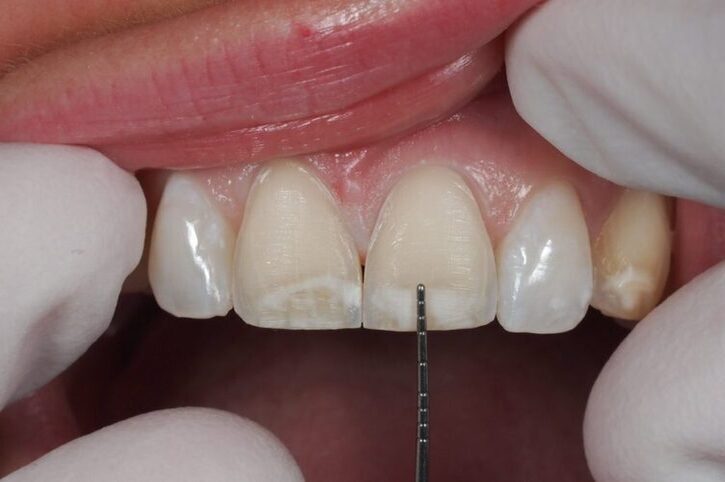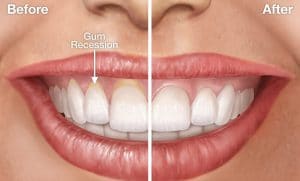Everyone wants to have white teeth and a bright, and natural-looking smile. Yet, dental problems like stained, gappy, or cracked teeth make people less confident when smiling. To avoid this problem, dental veneers can be an effective solution.
However, the best type of veneers for a person can be different since each person has different dental conditions and needs. With Smile Team Turkey, you can get the best type of dental restorations in Turkey that are suitable for you. Here is everything you need to know about veneers and the best type of veneers for you.
What are Dental Veneers?
Dental veneers are custom-made thin shells of tooth-colored material that are attached to the outer surface of the teeth. Since they are custom-made, veneers match the shape, size, color, or length of the teeth.
Besides, with them, dental problems such as chipped or cracked teeth, discolored teeth, and misaligned teeth are intended to be treated. This cosmetic dental treatment’s aim is to restore the appearance of the teeth. To get veneers in Turkey, you can contact Smile Team Turkey. With our qualified professionals, we offer different types of dental restorations at an affordable price.
Exploring Different Types of Dental Veneers
Veneers help people have a bright and perfect smile. However, understanding and knowing the differences between types of veneers is critical before getting them. Such different types include porcelain, composite, lumineers, and non-prep veneers. Each of them uses different materials and has various treatment processes.
Porcelain Veneers
One of the types of veneers is porcelain veneer. It is a thin layer of porcelain that is attached to the tooth’s outer surface. This is a custom-made treatment prepared for each patient differently. To place the porcelain veneer correctly on the teeth, a thin layer of enamel is removed by the dentist. In this way, the porcelain veneer can be replaced perfectly and have a more natural look.
Composite Veneers
Composite veneers are a dental cosmetic method that involves covering the front of an existing tooth. This type of veneer is made from a tooth-colored composite resin material. Compared to other types of veneers, they are budget-friendly and require easy installation.
Lumineers
During lumineers treatment, ultra-thin dental restorations that are applied are intended to offer a minimally invasive and reversible cosmetic treatment for improving the appearance of teeth. They require less dental work and preparation, which is why many people prefer them.
Since minimal tooth preparation is required, lumineers can sometimes be removed without significantly damaging the underlying teeth. People who prefer reversible options may find this feature appealing.
Non-Prep Veneers
Thanks to their non-invasive and quicker process, non-prep restorations are among the most common types of veneers. They are custom-made just like other types of veneers. However, they require less removal of enamel. Also, with non-prep veneers, a reversible procedure is possible due to the preservation of the natural tooth structure.
Choosing the Best Type of Veneers for You
People who are not satisfied with their smile or teeth can get restorations to have healthy teeth and bright smiles. However, there are many different types of veneers. That is why people cannot decide which one to get. Yet, there are some exemplary factors as to which one will work best for you.
Considering tooth and face shape or tooth color before getting restorations may help you be satisfied with the results. Keep in mind that to learn more about types of veneers or which one is more suitable for you, you should consult a dentist. These professionals can suggest the best type of veneers for you.
Consider Your Tooth and Face Shape
For the most natural and aesthetically pleasing results, it is essential to consider your tooth and face shape when choosing dental restorations. There are various types of veneers, however, choosing the one that matches your tooth and face shape can help the dental veneer look more natural.
Maintaining proper equalization and symmetry with the restorations and surrounding teeth is important to ensure that the restorations are in harmony with your other teeth and facial features.
Choose The One That Matches Your Tooth Color
When looking for types of veneers, choosing one that matches your tooth color is another consideration. Dental restorations can be matched to your existing tooth color or a whiter shade to have a bright smile, if desired.
How are Dental Veneers Applied?
The application of dental restorations requires some steps. Even though there are different steps for different types of veneers, there generally are some common steps as well. After consulting a dentist, undergoing examinations and deciding on the type of veneer, the application process begins. In most cases, the dentist will have to prepare the teeth to properly fit the restorations.
Depending on the type of the restoration chosen, it can be necessary to remove a thin layer of enamel from the teeth’s front surface. After the tooth preparation process, the veneer replacement process starts. The restorations are carefully positioned on the tooth surfaces after the prepared teeth are adjusted with dental adhesive.
After the restorations are bonded, the dentist may make additional adjustments, like checking your bite or making color and size adjustments. During dental visits for this process, the dentist will make sure the dental restorations fit perfectly and make any necessary adjustments for better results. After this, to make further adjustments, you may need to schedule another dental appointment.
How to Care for Dental Veneers?
To increase the lifespan of veneers, taking good care of them is necessary. To take good care of them, here are some tips for you.
- Maintain good oral hygiene: Practicing good oral hygiene by brushing and flossing at least twice a day is important whether you have restorations or not. However, if you have them, you need to be extra careful. To protect them, brush with a soft-bristled toothbrush and non-abrasive toothpaste.
- Limit your consumption of certain food and drinks: Most restorations are stain-resistant. However, drinking coffee, red wine or tea can lead to discoloration. Also, some hard foods like nuts or ice can cause restorations to chip or break. To minimize the risks, you should avoid consuming them.
- Regular dental check-ups: Scheduling appointments at least twice a year is recommended for oral health. During dental check-ups, the dentist can detect potential problems and treat them immediately.
- Habit Changes: If you grind your teeth or have bruxism, you should inform your dentist about it. Both of them can cause veneers to chip or crack.
You can reach our previous article from https://smileteamturkey.com/blog/choosing-oral-care-products-according-to-caries-risk-profile/






